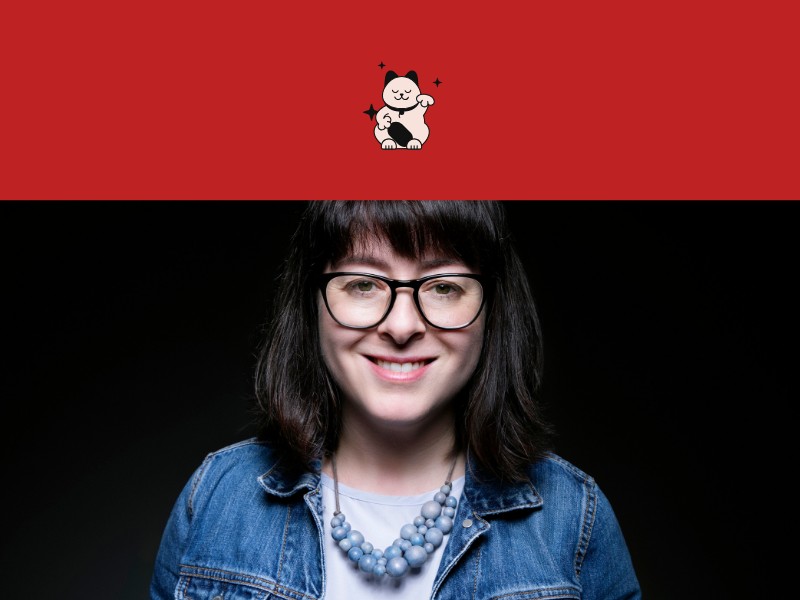How packaging your consulting offerings as productized services can benefit your business
For service-based businesses, having a really close look at your core services and determining which services can be productized can save you an enormous amount of time and keep you organised for the year ahead. Productizing your services eliminates the need for proposals (which take up time) and clarifies your offering, making you more organised as you are working within a tightly defined scope.

What are productized services?
A productized service is a service that has been packaged into a product. Most consulting businesses offer 1:1 services in the form of advice, strategy, analysis, mentoring and training. However, if you break these services down into their component parts (the areas of change that clients need to tackle, such as retirement planning or dispute resolution), it’s clear that some of those components can be packaged up and sold as a product.
This may mean you offer the same service on a subscription model or a one-off payment, but either way it’s a change in the way that you work. The productized service is distinct from a traditional service offering in that it has a specific expected outcome and/or a time frame. It can be delivered on an ongoing basis to keep clients engaged with your business, so they feel there is value for them in being a customer of yours.
What are the benefits of selling productized services?
The benefits of using productized services include:
- Increased efficiency and productivity — you can automate many aspects of a productized service as a definable scope means a systematized service with easy to replicate elements.
- Reduced costs — it allows you to work with clients who want specific outcomes, without having to spend time on proposals or custom quotes.
- Increased profitability — reducing your custom work (even if much of your service is still custom within the productized service) allows you to help more clients through a predictable and reliable service model that leads to annual recurring revenue.
- Improved customer satisfaction — price transparency that comes with a fixed price and better communication through automated email sequences (as only a couple of examples of ways to improve customer experience) increased client loyalty and customer lifetime value.
- Improved quality of service delivery — productizing a service is also a great way of ensuring quality control; by systematizing what you do, you are guaranteeing consistently high-quality work output and reliable outcomes for your clients.
- Adds value to your business — if you’re thinking about exit strategies (and you should be), productized services are a reliable business model for increasing value for strategic exit planning.
Why should I use a productized service?
Now you know all about productized services, here are 8 reasons why you should be using them.
- You can get more clients — offering a productized service allows you to get in front of an audience who may not want to engage with your business in any other way. If you’re looking to grow your client base quickly this is a great way of doing it.
- Decrease the length of your sales cycle — without the back-and-forth that comes with custom quoting, you are eliminating a bunch of sales calls, scope-setting and other aspects of client acquisition.
- You can increase your profit per client — and therefore grow your business more quickly and with less effort.
- You don’t need to provide a custom proposal (hallelujah) — productized services are reasonably straightforward to define, so you can get in front of your ideal client straight away by communicating the offering online; there’s no time spent backtracking or trying to work out what potential clients might need.
- It’s easier to systematize and automate — as your service becomes more productized, it becomes easier to systematize and automate. This means you can reduce the amount of time you spend on manual tasks, and focus on the things that really matter.
- You have a predictable outcome — everyone loves a bit of certainty in their lives and with productized services you can offer just that. This means new clients know what they’re getting and are more likely to stick around for longer.
- Less scope creep for your business — anything outside the scope of the productized service goes into a different productized service (such as a day rate or other intensive, read on…)
- It’s scalable — as your business grows, you can easily add more people to your team to help deliver on your productized service offering.
How do I package a complex or bespoke service?
“But my service is too complex and bespoke to be productized…”
Contrary to popular belief, most services can be productized, it’s just a matter of taking the time to go deep. In my experience, any business owner who puts in the work to productizing services will find the very act of going through this process has, in turn, cut out a lot of organically grown, but overly cumbersome complexities in their operations. The very process of working out the scope for a packaged service and the systems that will help to contain and scale your productized service offering is overwhelmingly beneficial in streamlining overall business operations and optimizing your client experience.
What are some productized service examples?
- Bookkeeping
- Legal consulting
- Dispute resolution
- Financial advice
- Therapy and health services
- Content writing services, i.e. per blog post or number of social posts.
- Social media management
- Marketing services
- Design service, such as website design or access to a dedicated designer for a day.
- ANY advisory service, i.e., 30 min consultation calls.
- ANY retainer involving a monthly service that can be transformed into a pre-paid subscription.
Who can benefit from this type of business model?
If your own business runs on a traditional service business model, you can benefit from making the switch to digitize and systematize with a productized services model. You don’t need to ditch your custom services to do this. Your service business might use productized consulting services as either a gateway to your custom services or as lead generation to other productized services on your product ladder.
What are some productized service business ideas?
You’re sold on the idea of productized services but don’t know where to start. Here are four productized service models you can consider for your business.
1. Service packages
If you offer a service that’s inherently manual and involves the intangible assets of your knowledge and skills, consider packaging the service into a defined scope. To narrow this down, What work do you like to do the most? What service is getting the best testimonials from your clients? What commonalities can be included to limit the scope of this service into a packaged service?
Remember, packaging a service doesn’t mean you have to exclude all the extras that a lot of your clients like or need. It’s about finding the commonalities that form the core of your key service, and everything else can be an add-on.
Examples of successful packaged services:
- Online document legalisation: Sydney-based firm Authentifier have had huge success productizing their document attestation and legalisation services into distinct packages that solve a clear problem for their clients — authenticating and legalising Australian documents for overseas use, including notarisation, DFAT legalisation and embassy visit and authentication. Despite the downturn in international travel due to the pandemic, the productized service model used by Authentifier has allowed the business to offer a unique offering to Australians who got stuck overseas in 2020–2021. It was easy to quickly shift marketing for existing productized services to a new segment of potential customers who specifically needed an online service.
- Grant applications: Get Grants advise businesses on government grants they are eligible for and manage the entire application process on the client’s behalf. The fixed fee, in this case, is a percentage value of the grant, allowing Get Grants to have a variable fee structure depending on the work involved in applications by the size of the grant, but without ever having to spend time on custom quotes for their clients, as the fee is still fixed and transparent.
- Web design: here at Studio Clvr I’ve packaged our custom web design service into two simple packaged tiers: emerging businesses and established businesses. Both have a clear scope-of-work and prospective clients can see exactly what they getting. If a client has any unique requirements outside the set scope, they can book a productized intensive (a day rate, productized as a Clever day) where they can add anything else they need without me needing to do any long custom proposals that cater to every bespoke requirement.
- Sprint Law’s Legal Health Check—this is a great entry-level, fixed-fee service to introduce clients to the firm and their other fixed-fee service offerings. All of their services are fixed-fee, so there are no surprises for the client.
- EasyCompanies came out of the same Sydney startup incubator that I did (Fishburners) and I refer clients to them all the time thanks to their easy, fixed-fee model for business registration services.
2. Offer a time-based flat rate
The Clever Day I mentioned above is a perfect example of a time-based flat rate and is an easy way to put ‘all the things’ you can do for your clients into a pre-purchased product that is based on one thing only—your time. But how is that different from other time-based work, I hear you asked? Well, hear me out. First, it moves you rapidly (and as fast as possible) away from the horrors of billable hours. I still time record absolutely everything I do, but more from an analytics perspective. Offering a day rate or an intensive sprint to whatever time limits suits the services you offer and the way you work is one of the easiest ways to productize a service really quickly. The key here is that you are wrapping the day with systematised processes to create a consistent experience for clients booking the service—so everything that happens around the day, from booking, to payment, to service delivery, and the gathering of client testimonials is all packaged up into a productized service.
Since adding the Clever Hour and Clever Day consulting services to Studio Clvr, I’ve sold nearly one per week, creating a revenue stream for advice that I was previously giving away for free, and such an easy process for the day rate, that clients keep booking again and again, with many clients now on Clever Day subscriptions (see below for the subscription-based productized service model).
Examples of one-off time-based services (often referred to as intensives or sprints):
- Our Clever Days—intensives enveloped in a super-clean and streamlined system to help automate the admin out of the service, giving me more time to get my head down and get on with it, while also allowing more headspace for strategic thought and creative freedom. The Clever Days have been a massive success with clients, and I can’t stop talking about how much I love them, too.
- My good friend Eva at Pocket Films has an easy day rate setup that is great for transparency and client comfort.
3. Offer a subscription service
This is a great way to provide ongoing value to your clients and increase your recurring revenue. The subscription can be time- or outcome-based, or it can be set around access to a resource library alongside consulting work — you set the rules. This is essentially a variation on the retainer model, where clients are paying to have on-call access to you. That access could be for a set number of hours of advice, hands-on work, or a combination of the two.
For Studio Clvr, I have clients on subscriptions for website care plans, and other clients on subscriptions for Virtual Chief Marketing Officer services, whereby I offer an ongoing advisory retainer with specific tasks + consulting time, alongside access to a marketing resource library for subscribers only. The pricing model is a single tier, fixed-fee with a discount off my other services.
This type of advisory retainer can make a great subscription offer and can easily be combined with more hands-on tasks.
Examples of productized services as subscriptions:
- LegalVision is a great example of a successful membership model. They offer a membership subscription whereby the scope is the same for all clients, and the price increases based on the size of the business and length of contract.
- LawPath offer a similar service with a 3-tier subscription defined by scope.
- OpenLegal provide a low-cost monthly fee for unlimited 30-minute consultations. This is a really simple entry-level support service with a clear scope that defines both what is and isn’t included. This is a great model for any consulting business, whereby you can set a monthly fee on access to 30-minutes of your time on a phone call, while providing an easy path to charging for additional services like research, written advice and all of your other services.
- Spark Financial Group have a three-tier subscription with varying inclusion depending on the level of ongoing financial advice and level of personal care required.
All of these subscriptions work really well as a base-level offering that provides ongoing revenue while also keeping clients loyal for ongoing higher-level work when it comes up outside of the subscription scope.
4. Courses, webinars and training packages
Have you noticed a number of clients asking for the same advice or how-to help over and over again? If so, turn your answer into a course. Depending on how in-depth the information and materials are, the course could be used as a low-cost entry to other services you offer, or it could be a retention piece that helps to build client loyalty and extend the lifetime value of your existing customers.
Examples of courses, webinars and training packages for consultants:
- Get Grants: Grant Discovery Workshops are a great way to introduce new clients to Get Grants services at a lower price, using a one-to-many workshop model.
- HerBusiness: the Small Business Finance Course is a great example of a course targeted at a specific audience—female, small business owners.
- I’m a longtime follower and occasional buyer of courses from Business of Design, a business management consulting service for design businesses. Their Coaching page lists a range of courses that can be purchased as one-offs, separate from their membership service.
There are millions of examples of courses out there, but reach out if you’re stuck on a good example relevant to your business, I’m sure I can come up with some good ideas for you.
How can I get started with productized services?
You don’t need to hire a team of developers to fully productize your business. Many existing tools and systems can be integrated to sell, deliver, and grow your productized service. The secret to getting this right is planning, building, and iterating as you go to refine an offering that will continue to grow your business.
Map out your processes and commonalities in projects to come to a scope of work that can be sold as a product. Not only do productized services make you more organised by standardising the way you work, but by their nature, they create better customer experiences and make your business more scalable for growth.
To sum up
Think about the services you offer and consider which model fits with what you are already doing. The quickest way to get a productized service up and running is to systematise a service you already offer. If done well productized services can be extremely powerful for attracting new clients and building relationships with existing ones. The goal of productized services is to make your offerings better, faster and easier to understand. Ultimately, like anything else in this industry, you should offer what you think will work best for your business and the market you’re targeting, taking into account any legal or regulatory requirements specific to your industry.
Thinking of productizing a service for your business? With some Clever Help, you can productize your business in as little as one day!
Note: yes, I have knowingly used the American spelling for ‘productised’ throughout this article, even though I am an Australian writing from Sydney! I’m leaning in to z on this one for the keyword benefit — ’cause that’s what folks are searching for! But rest assured that I do know where I am, and I can spell! Promise.

Hey, I’m Nic. I’m a digital design strategist on a mission to make your clever stand out. Because the world is better when we’re clever, together.
Like what you’re reading? Sign up to the Box Clever newsletter for fortnightly clever business tips, musings and related website wondery.
There's more where that came from...

How to avoid AI content traps that tank your authority
How to leverage AI without sacrificing your unique voice and professional credibility.

Increase Google ranking thanks to the algorithm leak
There was a massive Google algorithm leak in 2024. I trawled through the analysis to convey the biggest…

My story
I’ve built a career around designing systems that make getting stuff done easier. That means content systems that…